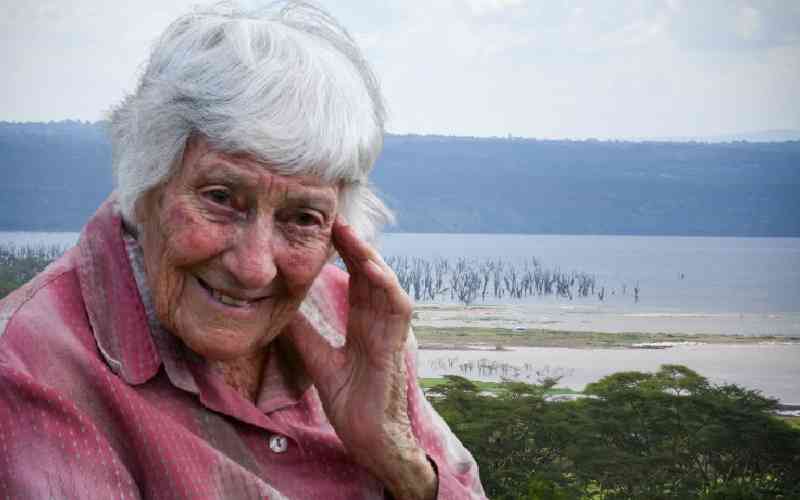Ferdinand Mwongela
From Nakuru town, Lake Nakuru National Park is a walking distance. Nothing beats the feeling of the feet against the dry Rift Valley vegetation.
On this particular Sunday, the stretch from the park’s gate to the main road was jammed with picnicking families and quite a few lovebirds courting on the lovely, green grass under the shade of acacia trees that line the road, taking advantage of the benevolence of mother nature.
We arrived at the park gate to the welcoming chatter of monkeys swinging in the trees above us as we waited for the gate formalities. The more daring of the primates came closer to inspect us, their distant cousins.
Daring animals
Finally our hosts, the Kenya Tourist Board, announced that all was clear. After a four-day whirlwind tour of the Western Kenya tourism circuit, I was feeling like curling up and going to sleep were it not for the (shameful) fact that I have only seen flamingos in documentaries a fact that the Deputy Park Warden Joseph Dadacha kept driving home. After what seemed like an eternity and a talk by the warden on the do’s and don’ts, like I was going to step out of the vehicle and play ball with the lions, we entered the park. A few metres from the gate was a herd of impala, feeding while keeping a wary eye on our convoy of metallic monsters. A few feet past them a troop of baboon sauntered across the road like they had all the time in the world. The baboons in this park are bigger, darker and truly menacing.
This troop pauses to look at us as if waiting to see which one of us was brave enough to come closer. On a different day I would have probably taken the challenge.
They then walked away casually with almost a spring in their steps. I would give a lot to know what goes through these animals’ heads when they encounter tourists.
 |
Marabou storks at the shores of the lake. [PHOTO: maxwel agwanda/STANDARD] |
Degradation
A few metres later we crossed the Njoro River, one of the few that flow into Lake Nakuru, now unreliable thanks to the destruction upstream of the Mau and other consequences environmental degradation.
From here, the lake stretches out in front of us retreating slowly into itself as evidenced by the stretch of bare land where its waters stood before, a scene that can make a grown man weep.
At the point where the Njoro River empties into the Lake, the ugly marabou storks stand calmly by the bed and others in the water washing the corrosive salty waters of the lake from their feet after a day of feeding in the alkaline lake. From here the view that has made Lake Nakuru one of Kenya’s most known tourist stops is a sight to behold.
The flamingos in their hundreds relax in the water, retreating as we come closer. Sadly, along the past years flamingos have vanished sporadically to reappear later, but their numbers are now greatly reduced.
Their reflection in the water breathtaking with their long graceful legs is the envy of many. Here, we take some time to take in the sight and at the same time mourn the dying lake. Despite a herd of buffalo nearby, we get out of the vehicles.
Stay informed. Subscribe to our newsletter
Standing on what used to be part of the lake, one cannot help but feel how dire the situation is. There is a slightly ashy irritating air here and a whitish substance under our feet.
I am told that this is because the lake has no outlet and the ashy air is due to its alkalinity.
About 50 metres away from the herd of buffalos we pick out a few bulls. These, according to the deputy warden are the most aggressive of the lot and more likely to attack.
the big five
They are a grouchy lot after being sent into early retirement by the younger, more energetic bulls in the herd and they can only spend the rest of their lives keeping each other company and reminiscing on the good old days. The wazee hukumbuka kind of thing.
From here we move on and soon come upon another member of the Big Five. Three white rhinos grazing not far from the road. It is not until you see them up close that you realise how big these animals really are.
Their rippling muscle-bound tight bodies reels energy. After a few minutes of awed silence and clicking away for posterity we make a turn and that is when one of our vehicles got stuck. The warden casually tells us that some of us (men) must disembark and push the vehicle.
Baboon cliff
None of the women accompanying us said a word, makes one wonder what happens to all that equality yarn in times like these.
With a couple of rhinos capable of coming at you with a single minded devotion to dispatch you to the next world, it would take more than a stuck car to get me out of the vehicle.
A few enterprising gentlemen finally managed to push out the van and we were soon on our way. The next stop was at the baboon cliff lookout.
At about 300 metres from the floor of the park, the baboon cliff is the perfect place to cap off a beautiful tour.
True to its name, baboons were soon peeping from the bushes, in readiness to help us clear our stocks of food. After taking in bits and pieces, from the cliff you get the whole picture.
The view from here is spectacular, from the lake to the view of the nearby Nakuru town. From here, the trails left by tourists in the park look like paths crisscrossing each other.
Below us the tree canopy looked like blobs of green on a multicoloured carpet.
By now, dusk was fast falling. Our final destination was the Out of Africa lookout for a sundowners drink.
With armed rangers keeping vigil in case the king of the jungle decided to drop in unannounced, we sipped our drink watching the dusk fall on the park and Nakuru town come into life as lights came on slowly like a carefully choreographed move.
 The Standard Group Plc is a
multi-media organization with investments in media platforms spanning newspaper
print operations, television, radio broadcasting, digital and online services. The
Standard Group is recognized as a leading multi-media house in Kenya with a key
influence in matters of national and international interest.
The Standard Group Plc is a
multi-media organization with investments in media platforms spanning newspaper
print operations, television, radio broadcasting, digital and online services. The
Standard Group is recognized as a leading multi-media house in Kenya with a key
influence in matters of national and international interest.
 The Standard Group Plc is a
multi-media organization with investments in media platforms spanning newspaper
print operations, television, radio broadcasting, digital and online services. The
Standard Group is recognized as a leading multi-media house in Kenya with a key
influence in matters of national and international interest.
The Standard Group Plc is a
multi-media organization with investments in media platforms spanning newspaper
print operations, television, radio broadcasting, digital and online services. The
Standard Group is recognized as a leading multi-media house in Kenya with a key
influence in matters of national and international interest.










